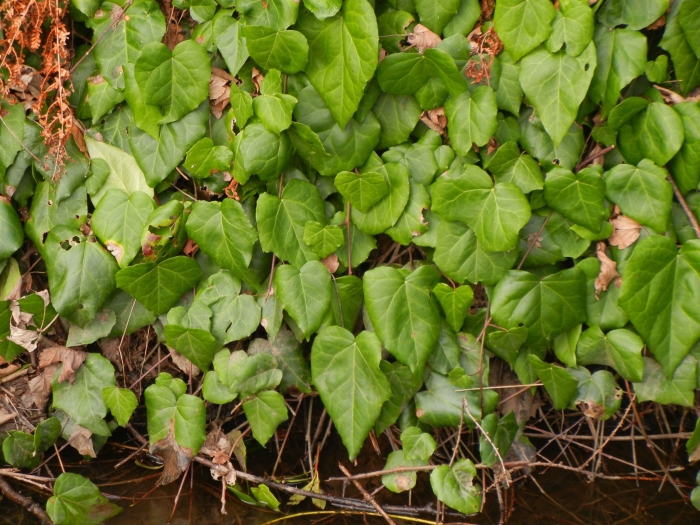Colchis Ivy
(Hedera colchica)
Colchis Ivy (Hedera colchica)
/
/

Jon Mortin
CC BY 4.0
Image By:
Jon Mortin
Recorded By:
Copyright:
CC BY 4.0
Copyright Notice:
Photo by: Jon Mortin | License Type: CC BY 4.0 | License URL: http://creativecommons.org/licenses/by/4.0/ | Rights Holder: Jon Mortin | Publisher: iNaturalist | Date Created: 2019-02-19T16:51:01-08:00 |




























Estimated Native Range
Summary
Hedera colchica, commonly known as Colchis Ivy or Persian Ivy, is an evergreen climbing plant native to moist forest floors, riverbanks, and rocky areas in Turkey and the Caucasus region. It can grow up to 30 meters high when provided with suitable surfaces such as trees, cliffs, or walls, and it can also serve as an effective ground cover in the absence of vertical supports. Its climbing mechanism involves aerial rootlets that adhere to surfaces. Persian Ivy is distinguished by its large leaves, which are the biggest among ivy species, measuring up to 15 cm wide and 25 cm long. The foliage is leathery and heart-shaped with a high gloss finish, adding to its ornamental value.
Colchis Ivy’s flowers, which appear from late summer to late autumn, are small, greenish, and grow in large umbels. They are a significant source of nectar for bees and other pollinators. Following the flowering period, the plant produces berries that mature during or after winter. This ivy is valued for its rapid growth in warm climates and its adaptability to a variety of conditions, including full sun and partial shade. It thrives in well-drained or alkaline soils that are rich in nutrients and humus, with consistent moisture. However, it is also known for its resilience and can tolerate less ideal conditions. In cultivation, it is used for covering walls, trellises, and other structures, as well as for providing evergreen ground cover in shaded areas. Gardeners should be aware that Hedera colchica can be potentially invasive outside its native range and should check local regulations before planting.CC BY-SA 4.0
Colchis Ivy’s flowers, which appear from late summer to late autumn, are small, greenish, and grow in large umbels. They are a significant source of nectar for bees and other pollinators. Following the flowering period, the plant produces berries that mature during or after winter. This ivy is valued for its rapid growth in warm climates and its adaptability to a variety of conditions, including full sun and partial shade. It thrives in well-drained or alkaline soils that are rich in nutrients and humus, with consistent moisture. However, it is also known for its resilience and can tolerate less ideal conditions. In cultivation, it is used for covering walls, trellises, and other structures, as well as for providing evergreen ground cover in shaded areas. Gardeners should be aware that Hedera colchica can be potentially invasive outside its native range and should check local regulations before planting.CC BY-SA 4.0
Plant Description
- Plant Type: Vine
- Height: 30-50 feet
- Width: 10-20 feet
- Growth Rate: Moderate
- Flower Color: N/A
- Flowering Season: Fall
- Leaf Retention: Evergreen
Growth Requirements
- Sun: Part Shade, Full Shade
- Water: Medium
- Drainage: Medium
Common Uses
Bank Stabilization, Bee Garden, Bird Garden, Butterfly Garden, Drought Tolerant, Erosion Control, Groundcover, Low Maintenance, Potted Plant, Street Planting
Natural Habitat
Moist forest floors, riverbanks, and rocky areas in Turkey and the Caucasus region
Other Names
Common Names: Persian Ivy , Kolchischer Efeu , Lierre De Perse , Lierre Du Caucase , Kaukasische Klimop , Kaukasisk Murgröna , Colchis-Ivy
Scientific Names: Hedera colchica , Hedera colchica var. dentata , Hedera colchica var. arborescens , Hedera caucasica , Hedera regneriana , Hedera rhombifolia , Hedera acuta , Hedera amurensis , Hedera colchica f. arborescens , Hedera colchica f. dentata
GBIF Accepted Name: Hedera colchica (K.Koch) K.Koch